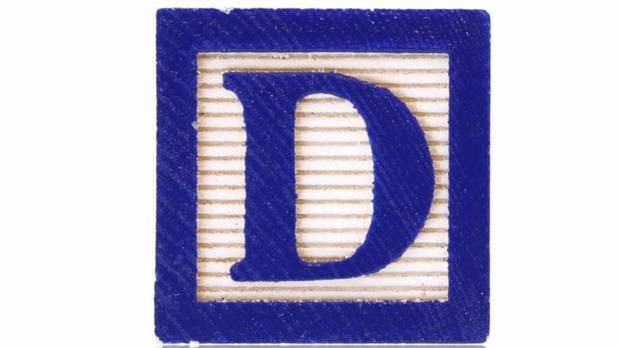Beware the sales pitch for actively managed mutual funds The Globe and Mail
Post on: 8 Апрель, 2015 No Comment

The success that banks and insurance companies are having in the wealth management business these days is a threat to your investing results.
Investor Tools
That’s fair if you’re getting good returns from your investments. But the reality of mutual funds is that over the long term, most investors do not. You’ll need to remember that as the investment industry tries to keep its momentum going in wealth management in the runup to registered retirement savings plan season.
A simple rule to follow: If you want the best chance of success as an investor, use an indexing approach and forget about actively managed mutual funds. Be a do-it-yourself investor, or have an adviser. Either way, when it comes to your investments, exchange-traded funds and low-cost index mutual funds will serve you best.
Expect people in the investment industry to get right up in your grill if you ask about index products. They’ll very likely tell you that actively managed mutual funds have dominated this year, and they’ll be right for that limited and thus insignificant time frame.
The fairest way to judge actively managed mutual funds is to compare their returns to the appropriate benchmark index, minus the small fee that ETFs charge. Remember: You can’t buy the index, only an ETF that tracks it. Globeinvestor.com data shows us that 329 of 415 fund products (or 79 per cent) in the Canadian equity category have beaten the S&P/TSX Composite Total Return Index in the 12 months to Oct. 31 – minus a typical ETF fee of 0.18 per cent.
“A year’s worth of performance really isn’t very meaningful at all,” counters Christopher Davis, director of fund analysis at the independent investment research firm Morningstar Canada. “I don’t think it means anything, really, for the long term.”
Index investing means buying ETFs or mutual funds that mimic the returns of various stock and bond indexes. This is called passive investing because the managers of these funds don’t choose what to hold – they simply mirror the index.
Managing index investments is low-effort, so it’s also low cost. You can buy several Canadian-market ETFs with a management expense ratio between 0.06 per cent and 0.27 per cent (for more details, check out our ETF buyer’s guide ). By contrast, the average MER for the 50 largest Canadian equity fund products is 1.9 per cent.
With a much heavier fee load to contend with, active managers have to decisively outsmart the index to offset the higher cost. This year, active managers delivered. First, they pared way back on the Canadian market’s least loved sector, materials. In today’s uncertain global economy, there’s not much interest in buying the shares of companies the dig metals out of the ground. Second, lots of active managers made sure to have a heaping helping of the banks and insurers that have been cleaning up in wealth management.
For the year to Nov. 14, materials were down 28.7 per cent as a sector while financials were up 20.5 per cent. These results helped the S&P/TSX Composite Total Return Index produce a gain of 11 per cent for the year to Oct. 31, while the group average for Canadian equity funds was 14.9 per cent.
Expect to see the fund industry exploiting numbers like this as we head into RRSP season. In fact, it’s already happening. A recent post on the Canadian Couch Potato blog ruthlessly critiques an ad from IA Clarington Investments that uses recent results to make the case for active management over indexing.
“There will always be given years where managers are able to outpace the benchmark,” Morningstar’s Mr. Davis said. “But over the long term, managers have a much more difficult time.”
Here’s proof. With a five-year view, the share of mutual funds outperforming the index minus ETF fees falls to 47 per cent; over 10 years, it falls to 23 per cent. Those statistics flatter the mutual fund industry because they’ve been cleansed of the many dud funds that have been shut down or merged into other products over the years. “The funds that disappear do that for one reason usually – they had a bad record,” Mr. Davis said.
If you use mutual funds, then, your job is to find one of the minority of funds outperforming the index over the long term and not get stuck among the majority that underperform. Hard-core indexers insist it’s hopeless to find outperforming funds, but I’m not totally convinced.
The largest Canadian equity fund, Beutel Goodman Canadian Equity D, has been mildly beating the index for about two decades with a mix of low fees and steady, pension fund-style management. Similar standout Canadian equity funds include Mawer Canadian Equity and Leith Wheeler Canadian Equity.

What assurances do we have that these funds will outperform in the future? Just a history of regularly beating the index through the market ups and downs of the past 10 years. Most funds can’t even offer you that. You may as well buy the index that best represents a particular stock or bond market and leave it at that.
Some of the biggest investment firms in the world sell index-tracking ETFs, including BlackRock, Fidelity, Invesco and Vanguard. A growing number of advisers incorporate ETFs into fee-based accounts, where you pay an advice charge of something like 1 per cent of your account value every year plus the fee charged by the investments you own. And yet, banks, insurance companies and investment dealers prefer to manage your wealth the old-fashioned way – through mutual funds and similar products. That’s because active management is much more lucrative for them, says Larry Swedroe, an investing columnist on CBS MoneyWatch, a principal with Buckingham Asset Management in St. Louis, Mo. and the author of several best-selling investment books.
“If you’re a passive investor, you pay low fees. They [investment firms] don’t want low fees,” he said during a visit to Ottawa recently. “Getting you to be passive takes money out of their pocket.”
Mr. Swedroe is a believer in an alternative form of indexing where you don’t take the stocks in an index as they come. Instead, you screen them to find the strongest and most undervalued. Still, he unequivocally believes traditional indexing is a better approach than actively managed mutual funds.
“As investors learn and get fed up with bad outcomes, they’ll wake up to this,” he said. “It will happen as sure as the ocean is eroding the shore.”
Users of the Globe app can click here to see the Canadian equity fund scorecard.
For more personal finance coverage, follow Rob Carrick on Twitter ( @rcarrick ) and Facebook ( robcarrickfinance ).














